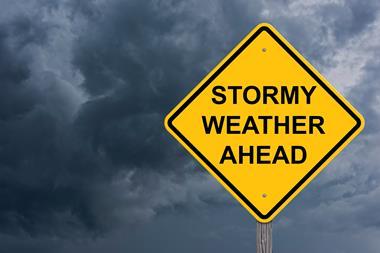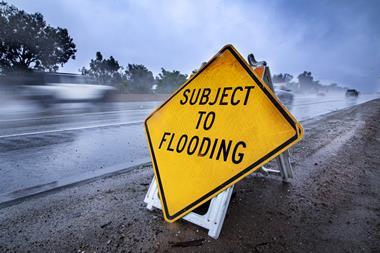With natural catastrophes affecting all worldwide jurisdictions in some way, shape or form, reinsurer emphasises that steps must be taken now to implement change and reduce insured losses
By Jon Guy
While the Dali ship’s collision with the Francis Scott Key Bridge in Baltimore and Lloyd’s of London’s financial results at the end of March 2024 captured most of the insurance-related headlines, last week also saw the opening salvo in what is likely to be a far more fundamental debate for the wider industry.

Reinsurance company Swiss Re issued its latest Sigma report on the costs of natural catastrophes on 26 March 2024 – for the fourth year running, insured costs surpassed $100bn (£80bn). This figure also reaffirmed the 5% to 7% annual growth trend in global insured natural catastrophe losses since 1994.
Swiss Re explained that the scale of insured losses could double within the next 10 years as temperatures rise and extreme weather events become more frequent and intense due to continued global warming.
The underwriter warned that the relative loss burden compared to global gross domestic product (GDP) has doubled in the space of 30 years. However, the pace of climate change is such that it will take just a decade for the figure against GDP to double again.
Time for change
The numbers are stark, but the view from Swiss Re is that a fundamental change is needed. Last year also saw the penetration gap for natural catastrophe cover increase to over 60% of the economic losses.
Read: Bill Bradshaw - FM Global able to take ‘a really long-term view of risk’ where climate is concerned
Read: Briefing - Industry needs to deliver clarity on climate approach
Explore more ESG-related content here, or discover more briefing articles here
The opportunities, therefore, are huge – but so are the exposures.
The concern expressed by Swiss Re is that while 2023 was another $100bn plus year for natural catastrophe losses, this was without a standout event. It seems $100bn has become the new norm.
One of the biggest contributors to 2023’s figures were severe connective storms in the US and Europe, where such storms are increasing significantly.
The nature of major losses is changing, with no region in the world now nat cat free.
For Swiss Re, the time for action is now. It believes mitigation and adaptation is now a must if the industry is to cover natural catastrophe risks in any meaningful way.
Potential premium hikes
After many years of underwriters warning over the potential impact of the changing climate and its effects on natural catastrophes, the genie is out of the bottle.
The past week has seen a tangible change in the debate. The topic has moved from capacity and coverage to adaptation and resilience.
It is clear that the costs are now too high and reinsurers are looking for greater support from governments – for example, in the creation of more rigorous building codes to futureproof properties and reduce climate-related risks.
Recent years have seen reinsurers reducing their appetite for natural peril risks and all the signs are that this trend will only accelerate, leaving insurers with larger retentions and a need to price accordingly.
Reinsurers look to have drawn a line in the sand and the industry needs to understand the ramifications for insurers, brokers and end clients.

















































No comments yet